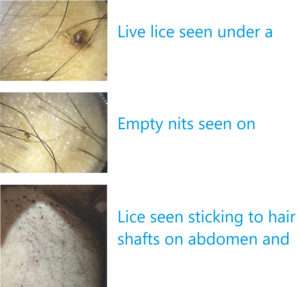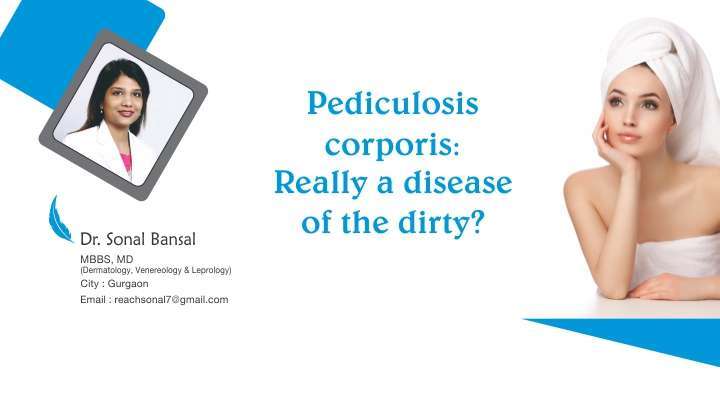Pediculosis corporis, also known as Pediculosis vestimenti and Vagabond’s disease is a cutaneous condition caused by body lice (Pediculus corporis) that lay their eggs in the seams of clothing.
Pediculosis pubis is usually sexually transmitted, and can extend beyond the pubic area to involve other areas of the body, including the eyelashes (pediculosis ciliaris). Phthirus pubis, also known as the crab louse, is the responsible organism.
Body lice frequently lay their eggs on or near the seams of clothing. They must feed on blood and usually only move to the skin to feed. They exist worldwide and infest people of all races. They spread rapidly under crowded living conditions where hygiene is poor through prolonged direct physical contact or through contact with fomites like linens or towels. Infestation is unlikely in anyone who bathes regularly and who has at least weekly access to freshly laundered clothing and bedding.
A 58-year old diabetic man presented with severe itching over abdomen, pubic area and upper thighs for 6 weeks. On examination, black dots were seen adhering to the hair shafts on abdomen and upper thighs. On closer examination, these dots were found to be lice. A dermatoscope helped in magnifying lice stuck to the hair shaft and also in documenting the movement. He was diagnosed as a case of pediculosis corporis. Patient denied history of same in any other family member although he was requested to bring his wife for examination. The patient and his clothes were neat in appearance, in contrast with the usual presentation of the disease. He was given oral ivermectin in dose 200mcg/kg stat dose and to be repeated after 2 weeks. He was also prescribed weekly application of permethrin 1% cream for half an hour for 2 weeks and anti histamines to be taken as required. The importance of personal hygiene was repeatedly emphasised. He was advised washing all clothes and bedding in boiling water thoroughly. He was asked to leave other fomites which could not be cleaned in this manner untouched and isolated for a week by which the louse would have died in absence of nutrition. His follow up visit after 2 weeks showed almost complete clearance of body lice, but empty nits were still seen adherent to the hair shafts. He was advised to shave the affected area. His blood sugar levels were under control throughout. He was advised HIV testing but the report is yet to be seen.
This case is interesting as pediculosis corporis is traditionally seen as a skin condition affecting persons with poor hygiene while this patient who had impeccable hygiene has a florid presentation in absence of any immune suppression.







